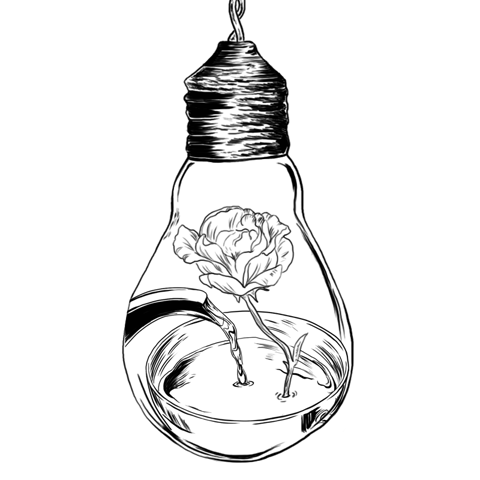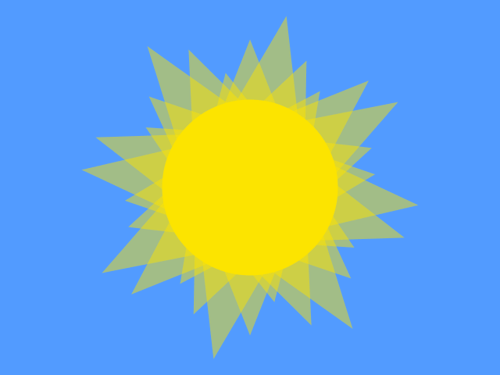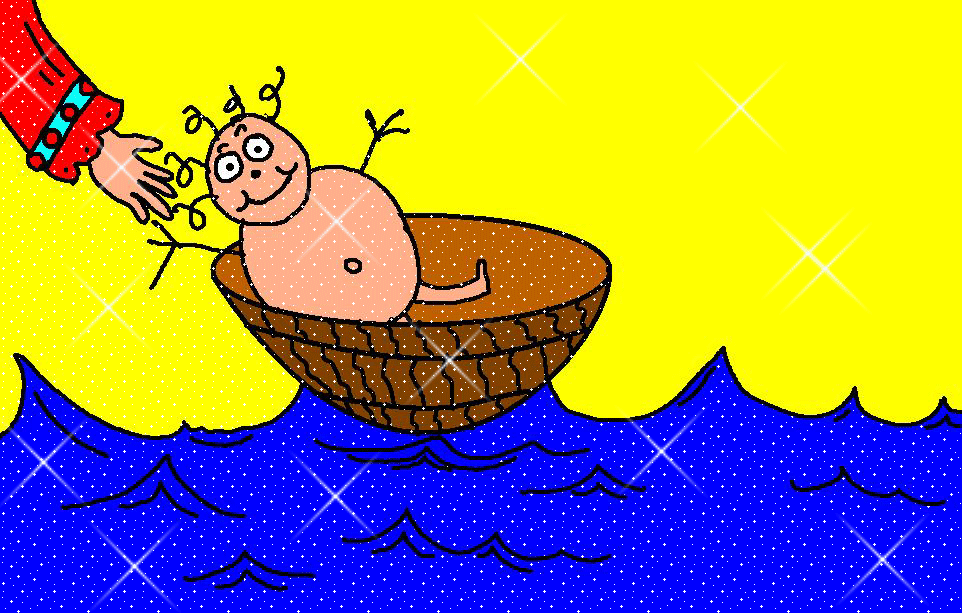Resources and Growth in Systems

Many systems have the capacity for the kind of explosive population growth normally associated with bacteria.
This unchecked growth does not often occur, however, because the energy and other resources necessary for organisms to survive and reproduce are limited in most populations. Because the resources available to individuals are limiting, organisms optimize their lifetime reproductive success by making tradeoffs at various points of their lifetimes between devoting resources to reproduction and devoting resources to their own growth and maintenance. These life history tradeoffs, in turn, are reflected in many of the adaptations that characterize different species.
All organisms have the potential for explosive population growth, but this growth typically is limited by available resources.
When a bacterium reproduces, for example, it simply divides, creating two daughter cells for each parent cell. If nothing hinders a bacterium’s reproduction, the results would be quite remarkable.
If the bacterium could divide once every 20 minutes (a realistic value) and this single bacterium and all its progeny divided unimpeded for 36 hours, at the end of that time, the bacterium and all its progeny would be so numerous that they would cover the entire surface of the Earth in a layer about a foot deep.
In a month, the descendents of the first bacterium would weigh more than the visible universe and would be expanding outward at the speed of light.
Darwin recognized from Malthus that all organisms have this growth potential;
Darwin wrote, “There is no exception to the rule that every organic being naturally increases at so high a rate that, if not destroyed, the Earth would soon be covered by the progeny of a single pair.”
This potential for excess reproduction was a key element of Darwin’s theory of natural selection. In general, however, organisms do not exhibit this kind of growth for sustained periods because they simply do not have sufficient resources to do so. Our exploration of energy and resources in living systems at higher levels of biological organization will center on the issue of how these resources are limiting and how limitations influence the organization of living systems, from the adaptations of individual organisms to the organization of entire ecosystems.
All work done in biological systems is powered by the energy stored in ATP, but other resources can be just as essential to life.
Energy flows into living systems from sunlight and is transformed into high-energy organic compounds by photosynthesis, which uses as raw materials CO2 and H2O. In addition to glucose, photosynthesis also produces O2 as a waste product. The carbon fixed by photosynthesis has one of two fates. First, the organic compounds produced by carbon fixation may be fed into the processes of cellular respiration and “burned” as organic fuel to produce ATP. About 90% of the G3P produced by photosynthesis has this fate. Second, organic carbon fixed in photosynthesis may be used as the starting point in the manufacture of other biomolecules and, thus, becomes the material organisms are made of. About 10% of the carbon is used this way. The organic material that makes up a plant or any other organism is referred to as biomass.

It seems intuitive that what limits the growth of living systems is the amount of CO2, H2O, and sunlight available.
However, organic molecules also incorporate a number of other important elements. Nitrogen is found in the amino acids that make up proteins. Phosphorus is used in nucleic acids, ATP, and other molecules. Sulfur is found in two important amino acids, cysteine and methionine. Many other elements, such as magnesium, occur in smaller amounts in living things, but are nonetheless essential for the proper functioning of biomolecules. Other elements, such as potassium, may not be incorporated directly into organic molecules but are still essential to life. All of these other elements are important resources that can cycle in and out of living systems just as carbon does. Living systems need these other resources just as much as they need sunlight, carbon dioxide, and water.
Even after considering essential and potentially limiting mineral nutrients, we are still defining resources in simplified terms. Any number of other factors may be resources that limit the ability of a particular organism to survive, grow, and reproduce. Regardless of the resource, in general, there often is not enough to go around. As a consequence, it matters where an organism lives, which other organisms live around it, and how these organisms interact with each other. In the most general terms, ecology is the name used for the interactions of organisms with each other and with their environments. Any examination of the implications of energy and resources at levels of
biological organization above the cell becomes an exploration of of the science of ecology.
Individuals with the highest Darwinian fitness are those that leave the most offspring in a population in a given environment, but organisms do not necessarily devote all their resources to producing offspring.
It seems obvious that adaptations should evolve that increase an organism’s ability to gain resources and convert those resources into offspring. However, some of the resources an organism acquires must be used for that organism’s growth. Other resources must be used for maintenance including not only physiological maintenance, but also acquiring food, finding shelter, and the like. Regardless of the resources an organism can acquire, it is important to consider how it allocates those resources.
The way an organism allocates resources differs among different kinds of organisms and usually changes across different stages of an organism’s lifespan.
An organism’s pattern of resource utilization across its lifespan is called the organism’s life history, which may be divided into stages. For example, consider the life histories of four very different organisms a tree, a marmot (a kind of large ground squirrel), a salmon, and a moth. Some organisms, such as the tree, are always gathering energy and resources. Many organisms, such as moths and marmots, acquire resources only during part of their life histories..
All life histories have one or more stages of growth. In a marmot or a moth, the growth stage is confined to an early period of life. Many organisms, however, devote resources to growth for an extended period, as in a salmon, or continue to devote resources to growth throughout their entire lives, as in the case of a tree. Throughout most life histories, some resources must always be devoted to maintenance. Some organisms will go through periods, such as hibernation, in which all they do is a form of maintenance.
Finally and most important, all life histories include a phase during which resources are devoted to reproduction. In the moth or the salmon, reproduction occurs only once, at the very end of the life history. In a tree or a marmot, reproduction can occur at repeated intervals after the organism has reached maturity. Life histories can vary dramatically among organisms; furthermore, variations among species reflect the action of natural selection, with each life history presumably maximizing reproductive output across an individual’s lifetime. Darwinian fitness must be measured in terms of the total reproductive success of an organism over its lifetime, and there are different ways to maximize this fitness by allocating resources over an organism’s life history.
The fact that an organism must divide up the total amount of resources available to it among different needs in its life history leads to life-history tradeoffs.
A life history strategy that would yield the greatest overall reproductive output might include beginning reproduction at an early age, producing many offspring at each instance of reproduction, and having many reproductive events. Because any organism faces resource limitations, however, changes that improve fitness by means of one life-history trait often reduce fitness by means of another. The most important of these tradeoffs involves when and how much energy is devoted to reproduction, which is illustrated by two different patterns of variation in life histories among different bird species.
The first pattern is a tradeoff between the resources invested in reproduction and the long-term survival of birds. Bird species with high annual fecundity (production of offspring) tend to live for shorter periods of time and vice versa. In other words, there is a life-history tradeoff between how much an organism invests in reproduction and how long it lives. Reproduction typically requires a significant investment in resources, which are, therefore, not available for such needs as long-term maintenance. This is called a tradeoff because the two extremes represent two different ways of maximizing reproductive success. The life-history patterns of different organisms can represent an evolutionary compromise of conflicting demands on the resources available to that organism. An important point is that neither extreme of a tradeoff performs “better” from an evolutionary point of view; the two extremes simply represent two different ways of maximizing reproductive success.
The second pattern has to do with when a bird species first begins to reproduce. In general, species that begin to reproduce at an earlier age have shorter lifespans. The sooner an organism starts devoting significant amounts of resources to reproduction, the sooner those resources are denied to maintenance, lowering the average probability of survival. On the other hand, the sooner an organism starts reproducing, the sooner its own offspring will grow up and themselves start reproducing.
Many adaptations of organisms including patterns of growth and reproduction, aspects of physiology and anatomy, and aspects of behavior reflect life-history tradeoffs. The nature of these tradeoffs, in turn, is ultimately determined by the energy and resources available to an organism


O_O I´m reading all :)